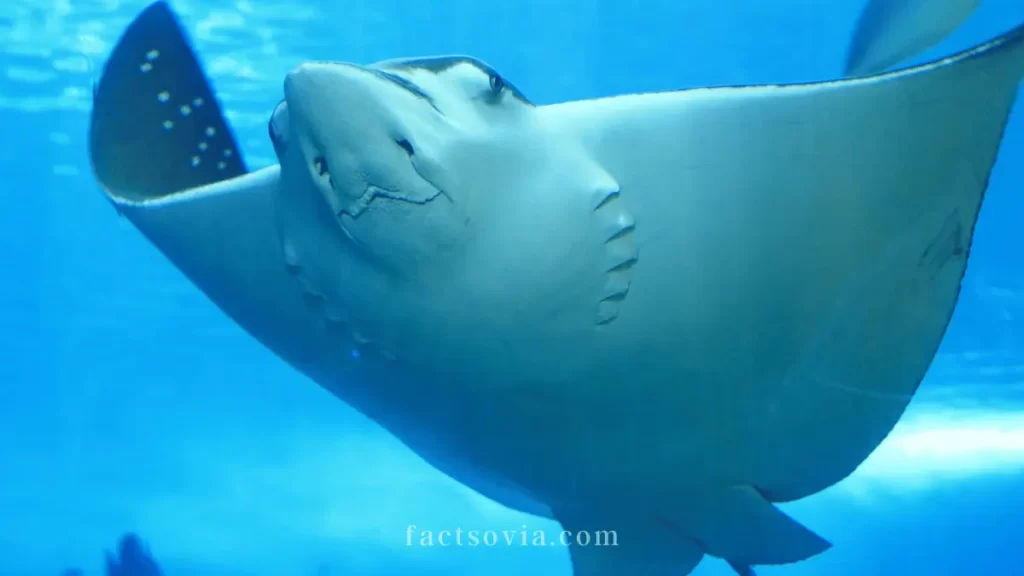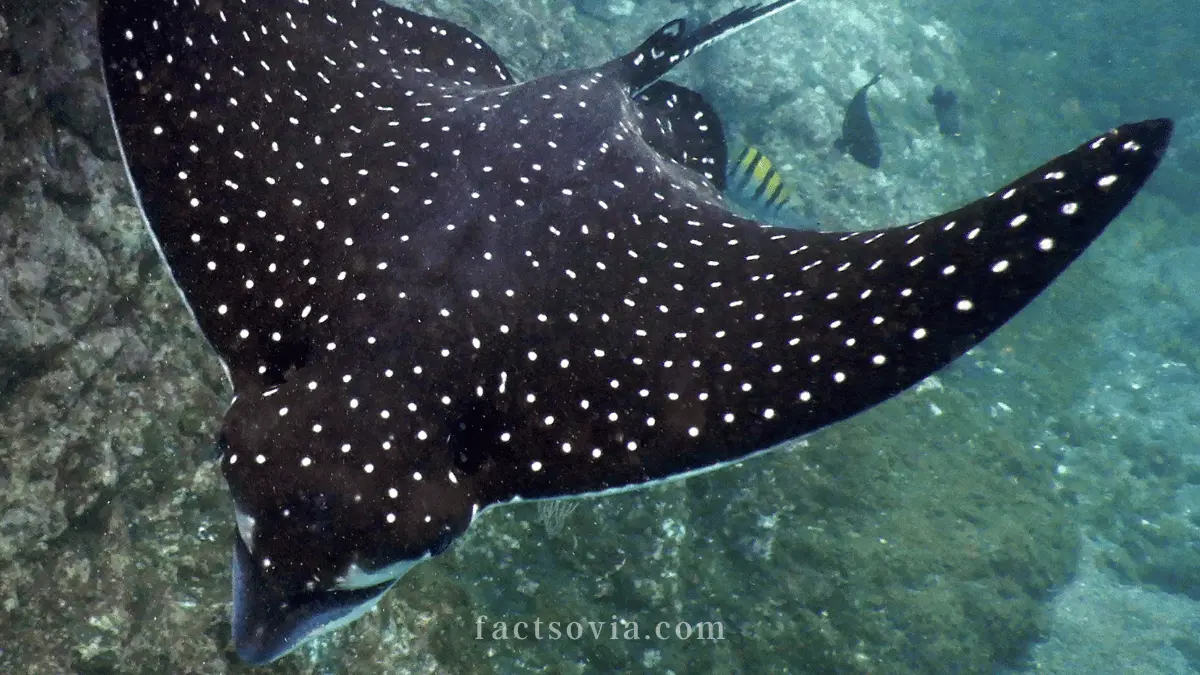We use affiliate links to run our site. When you buy through links on our site, we may earn an affiliate commission, without any added cost to you. Learn more
Beneath the waves, a majestic ocean creature soars through the blue depths. With brown, white-flecked wings stretching up to 8 feet across, it glides gracefully as if flying. When it breaches the surface, this magnificent ray bursts from the sea like an eagle taking flight.
The spotted eagle ray is one of the ocean’s most fascinating inhabitants. From their unique markings to their stunning acrobatics, they capture our imagination and fascinate all who encounter them. Join us as we dive below to uncover 10 captivating facts about these iconic rays.
You’ll learn amazing insights into their biology, behavior, and mysteries that still surround them. Let’s explore the spectacular world of the spotted eagle ray!
Here are 10 fascinating facts about these iconic rays:
| Scientific Name | Aetobatus narinari |
| Common Name | Spotted Eagle Ray |
| Family | Myliobatidae |
| Global Distribution | Tropical regions in the Atlantic, Pacific, and Indian Oceans (traditional), now restricted to the Atlantic (including the Caribbean and Gulf of Mexico) |
| Other Populations | Ocellated Eagle Ray (A. ocellatus), Pacific White-Spotted Eagle Ray (A. laticeps) |
| Reproduction | Ovoviviparous |
| Gestation Period | Approximately one year |
| Number of Pups | Up to four pups |
| Size of Newborns | 17–35 centimeters (6.7–13.8 inches) across |
| Maturation Period | 4 to 6 years |
| Feeding Habits | Bivalves, crabs, mollusks, echinoderms, crustaceans, polychaete worms, hermit crabs, shrimp, octopuses, and small fish |
| Predators | Sharks, including silvertip, tiger, and lemon sharks |
| Conservation Status | Near threatened (IUCN Red List) |
| Human Interaction | Attraction in aquariums, unintentional catch (bycatch), occasional leaping onto boats, generally not a threat to humans |
| Conservation Efforts | Reduced shark nets in South Africa, restrictions on ray catch in Florida, protection in the Great Barrier Reef, breeding programs in Europe |
1. Striking Appearance
Spotted eagle rays have a flattened body shape with a dark brown back covered in distinctive white spots. Their underside is white, creating a bold contrast. This unique coloration may help camouflage them from above and below.
2. Wing-Like Pectoral Fins
The massive pectoral fins of the spotted eagle ray can span up to 8 feet! These prominent fins resemble wings and enable the rays to gracefully glide through water like an eagle in flight.
3. Venomous Spines
Along the base of their whip-like tail, spotted eagle rays have 1-5 sharp, barbed spines. These spines are connected to venom glands and can inflict painful wounds on predators.
4. Unique Caudal Fin
The slender tail or caudal fin of the spotted eagle ray is highly modified into a long, whiplike shape without fins. They use this tail for navigating turns and balance.
5. Sexual Dimorphism
Male spotted eagle rays can be distinguished from females by their external reproductive organs called claspers. These finger-like claspers are located near the tail and are absent in females.
6. Diverse Diet

Spotted eagle rays feed on a variety of prey including bivalves, shrimp, crabs, octopus, fish, and more. Their flat teeth help them crack open hard shells to access the meat inside.
7. Impressive Size
These rays grow up to 8 feet long from head to tail. They can weigh over 350 pounds. Only the giant manta ray exceeds them in size among ray species.
8. Wide Range
Found in tropical and subtropical regions, spotted eagle rays live along Atlantic, Pacific, and Indian Ocean coastlines. They prefer shallow coastal habitats but may venture into estuaries and rivers.
9. Mysterious Population Status
Very little data exists on spotted eagle ray populations. They are classified as Data Deficient by the IUCN Red List. More research is needed to determine their conservation status.
10. Spectacular Behavior
Spotted eagle rays often leap fully out of the water, performing breathtaking aerial displays. They also congregate in large groups, creating a mesmerizing sight for divers and snorkelers.
Final Thoughts:
The spotted eagle ray continues to astound us with its beauty and adaptations. However, many mysteries remain about its status and role in ocean ecosystems. By sharing fascinating facts and photos of these rays, we can help raise awareness and appreciation for them.
We hope you enjoyed learning about the incredible spotted eagle ray. Let us know which fact you found most interesting by leaving a comment below. And be sure to check the site for more captivating ocean creature features coming soon!
By sharing our sense of awe for rays and other marine life, together we can make a positive difference in protecting our oceans’ future.
Amazon and the Amazon logo are trademarks of Amazon.com, Inc, or its affiliates.
